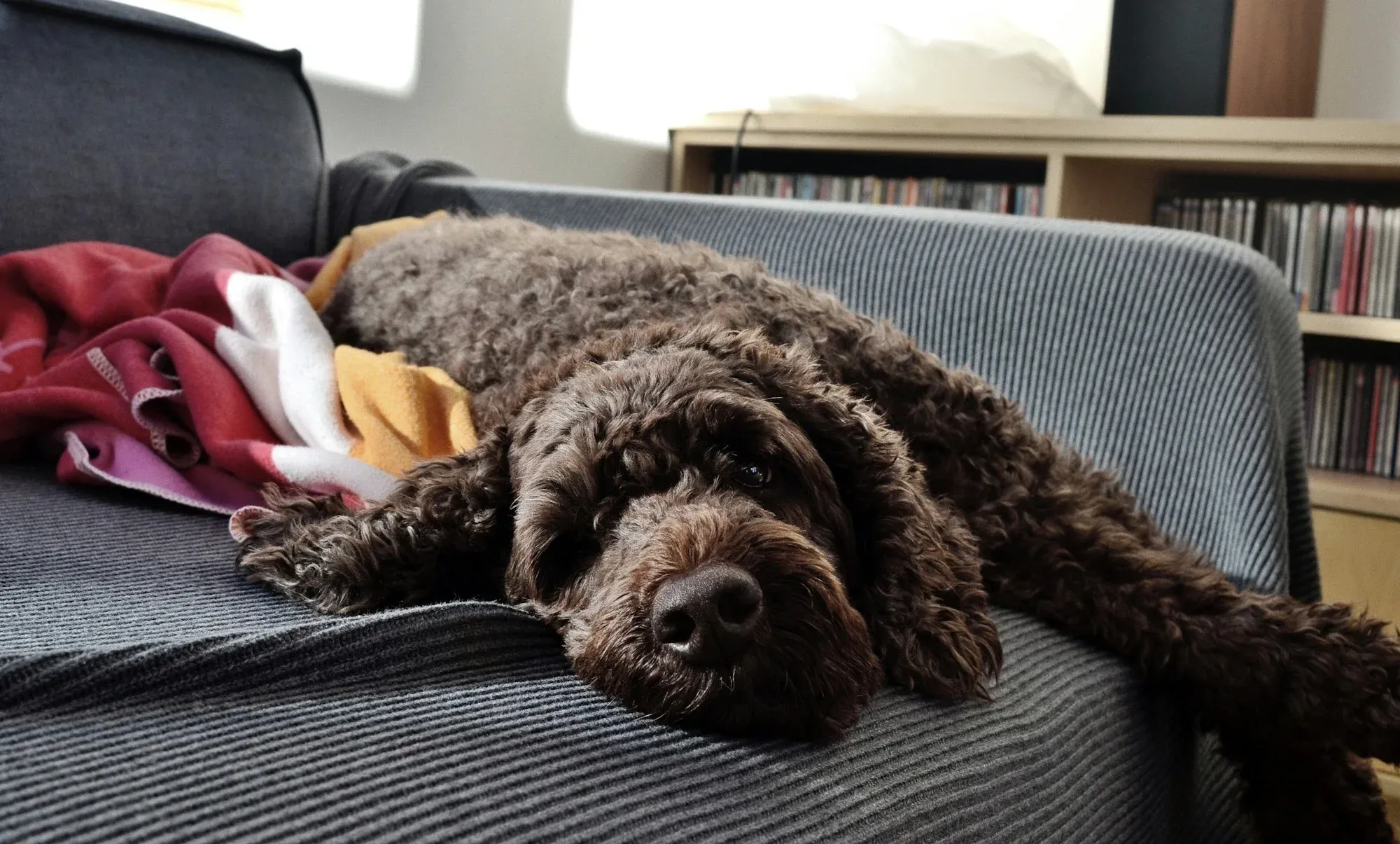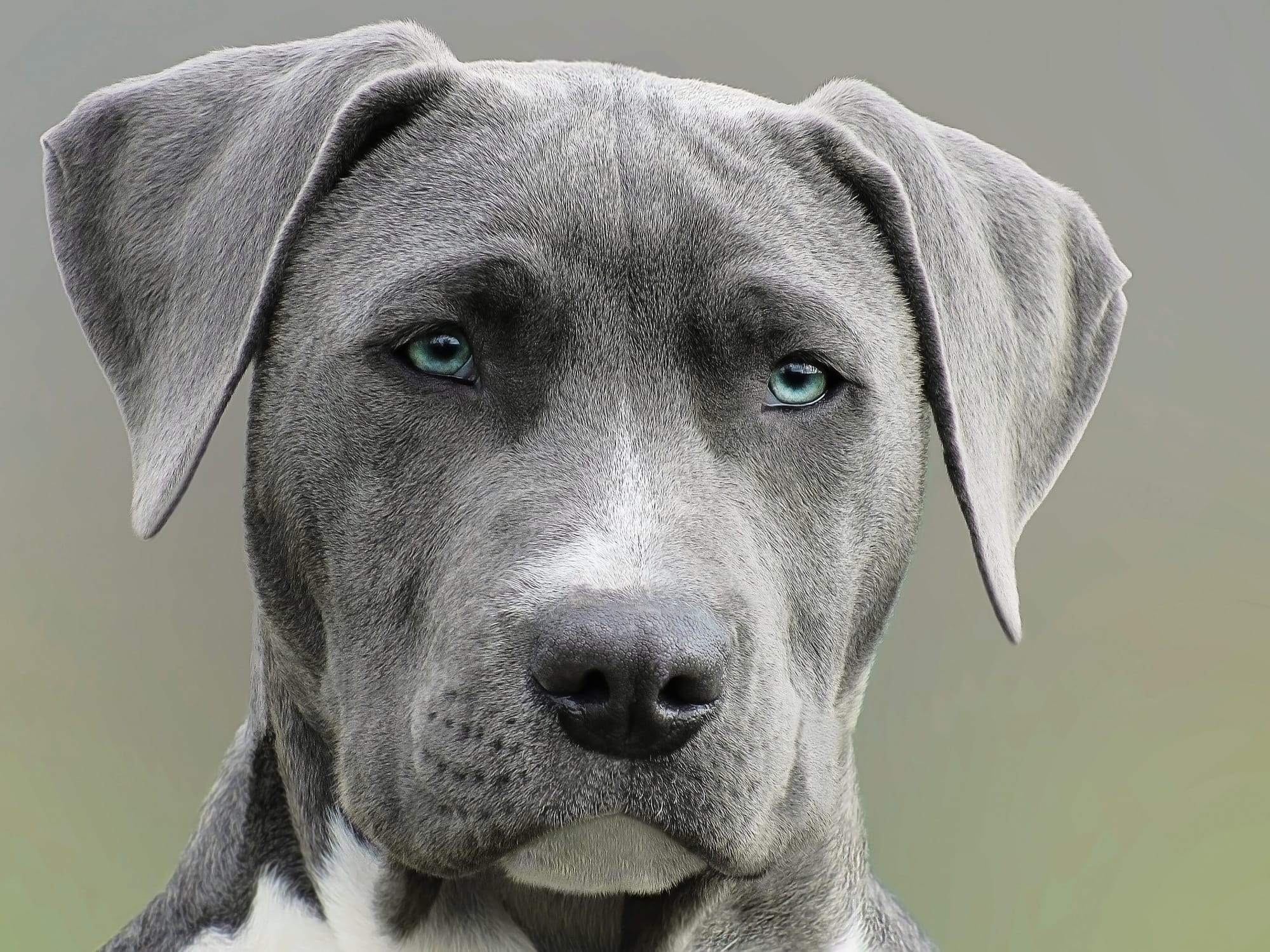Are you a devoted dog lover seeking a remarkable and unique furry friend to add to your family? Look no further than the enchanting Great Pyrenees Lab Mix. This captivating canine fusion combines the elegance of the Great Pyrenees with the exuberance of the Labrador Retriever, resulting in a delightful companion that exudes charm, intelligence, and boundless affection.

The Great Pyrenees Lab Mix, often affectionately referred to as the "Labrenees," is a captivating crossbreed that brings together the best of two remarkable dog breeds – the majestic Great Pyrenees and the spirited Labrador Retriever. This unique blend results in a loyal, intelligent, and loving companion that can truly enrich your life.
Origins and Heritage
The Labrenees traces its origins to its parent breeds, each with its distinct history. The Great Pyrenees, hailing from the Pyrenees Mountains in southwestern Europe, was originally bred to guard livestock. In contrast, the Labrador Retriever, a friendly and energetic breed, originated in Newfoundland, Canada, and was developed to assist fishermen in retrieving nets and catches.
Physical Attributes
The Labrenees boast an impressive stature that combines the physical traits of both its parent breeds. Let's delve into the stepwise breakdown of its captivating physical attributes:
1. Stature and Build: The Labrenees inherit the robust build of the Great Pyrenees, characterized by a well-muscled body and a strong bone structure. Standing proudly at a considerable height, this crossbreed exudes an air of elegance and strength.
2. Coat Diversity: Drawing from the heritage of both parent breeds, the Labrenees showcase a remarkable range of coat variations. From the luxurious, thick fur reminiscent of the Great Pyrenees to the sleek, water-resistant coat of the Labrador Retriever, each Labrenees can exhibit a unique coat texture and length.
3. Color Palette: Labrenees dogs exhibit a diverse dog coat color palette, which may include shades of white, cream, black, brown, and gray. These colors can manifest in solid coats or striking combinations, further contributing to the breed's visual appeal.
4. Tail and Ears: The Labrenees typically boast a bushy tail that elegantly trails behind them as they move. Their ears can vary in shape and size, ranging from the erect ears of the Labrador Retriever to the pendant ears often seen in the Great Pyrenees.
5. Weight: The weight of a fully grown Labrenees can vary widely, influenced by factors such as genetics, diet, and exercise. On average, these magnificent canines typically weigh between 70 to 110 pounds (31.8 to 49.9 kilograms).
6. Height: Labrenees dogs stand tall with an imposing stature that commands attention. On average, they measure around 25 to 32 inches (63.5 to 81.3 centimeters) in height at the shoulder. This considerable height is reminiscent of the Great Pyrenees, showcasing their impressive presence.
Temperamental Traits
The Labrenees inherit a delightful blend of temperamental traits from their parent breeds. Let's explore these traits step by step:
1. Gentle and Affectionate: Drawing from the Great Pyrenees lineage, Labrenees dogs are known for their gentle and affectionate nature. They form strong bonds with their families and are often seen as devoted companions, always ready to offer comfort and warmth.
2. Playful and Energetic: Thanks to the Labrador Retriever influence, Labrenees dogs exhibit a playful and energetic demeanor. They thrive in environments where they can engage in activities such as fetch, frisbee, and long walks, making them ideal companions for active individuals and families.
3. Protective Instincts: Labrenees dogs may also inherit protective instincts from their Great Pyrenees ancestry. This trait makes them excellent watchdogs, alerting their owners to potential dangers and strangers approaching their territory.
4. Social and Friendly: Labrenees dogs tend to be sociable and friendly, enjoying interactions with family members, other pets, and even strangers. Their Labrador Retriever heritage contributes to their easygoing nature and adaptability to various social situations.
Socialization and Training
Socialization and training are crucial aspects of raising well-behaved and well-adjusted Labrenees. Let's break down the socialization and training process step by step:
1. Early Exposure: Begin socializing your Labrenees puppy from a young age. Introduce them to various environments, people, and other animals to help them develop confidence and positive associations.
2. Positive Reinforcement: Utilize positive reinforcement techniques during training sessions. Reward your Labrenees with treats, praise, and affection for desired behaviors, such as following commands or exhibiting good manners.
3. Obedience Training: Teach basic obedience commands, such as "sit," "stay," "come," and "down." Consistent training sessions with clear communication and patience will help your Labrenees understand and obey your commands.
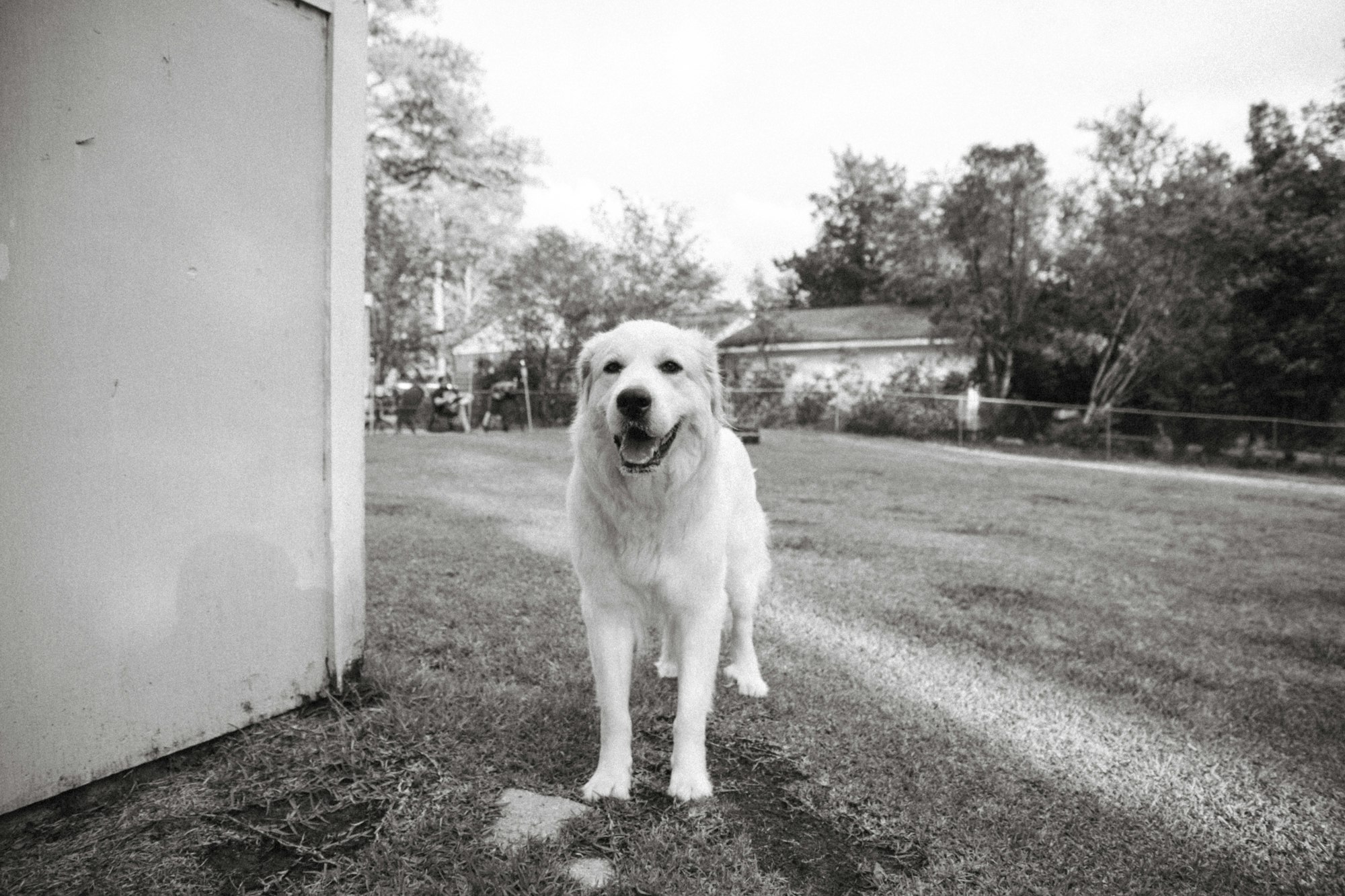
4. Leash and Crate Training: Train your Labrenees to walk on a leash without pulling and to feel comfortable in a crate. These skills are essential for their safety and well-being in various situations.
5. Continued Socialization: Maintain ongoing socialization throughout your Labrenees' life. Expose them to new experiences, people, and places to prevent behavioral issues and ensure their adaptability.
Nutritional Needs
Proper nutrition is paramount to the health and well-being of your Labrenees. Let's explore their nutritional needs step by step:
1. Consultation with a Veterinarian: Before selecting a diet for your Labrenees, consult with a veterinarian to determine their specific nutritional requirements based on age, weight, and activity level.
2. Balanced Diet: Provide a well-balanced diet that includes high-quality dog food rich in essential nutrients, including protein, carbohydrates, healthy fats, vitamins, and minerals.
3. Portion Control: Monitor portion sizes to prevent overfeeding or underfeeding. Adjust portion sizes as needed to maintain a healthy weight and prevent obesity.
4. Fresh Water: Ensure your Labrenees have access to fresh and clean water at all times to stay properly hydrated.
Exercise Requirements
Regular exercise is vital to the overall health and happiness of your Labrenees. Here's how to meet their exercise needs step by step:
1. Daily Physical Activity: Engage your Labrenees in daily physical activities to expend their energy and stimulate their minds. Aim for at least 60 minutes of exercise, which can include brisk walks, playtime, and mentally stimulating games.
2. Interactive Play: Incorporate interactive play sessions, such as fetch, tug-of-war, and puzzle toys, to keep your Labrenees mentally engaged and physically active.
3. Outdoor Adventures: Take your Labrenees on outdoor adventures, such as hiking, running, or swimming, to provide variety in their exercise routine and expose them to new experiences.
4. Mental Stimulation: Engage your Labrenees in mental exercises, such as obedience training, scent games, and agility courses, to challenge their intellect and prevent boredom.
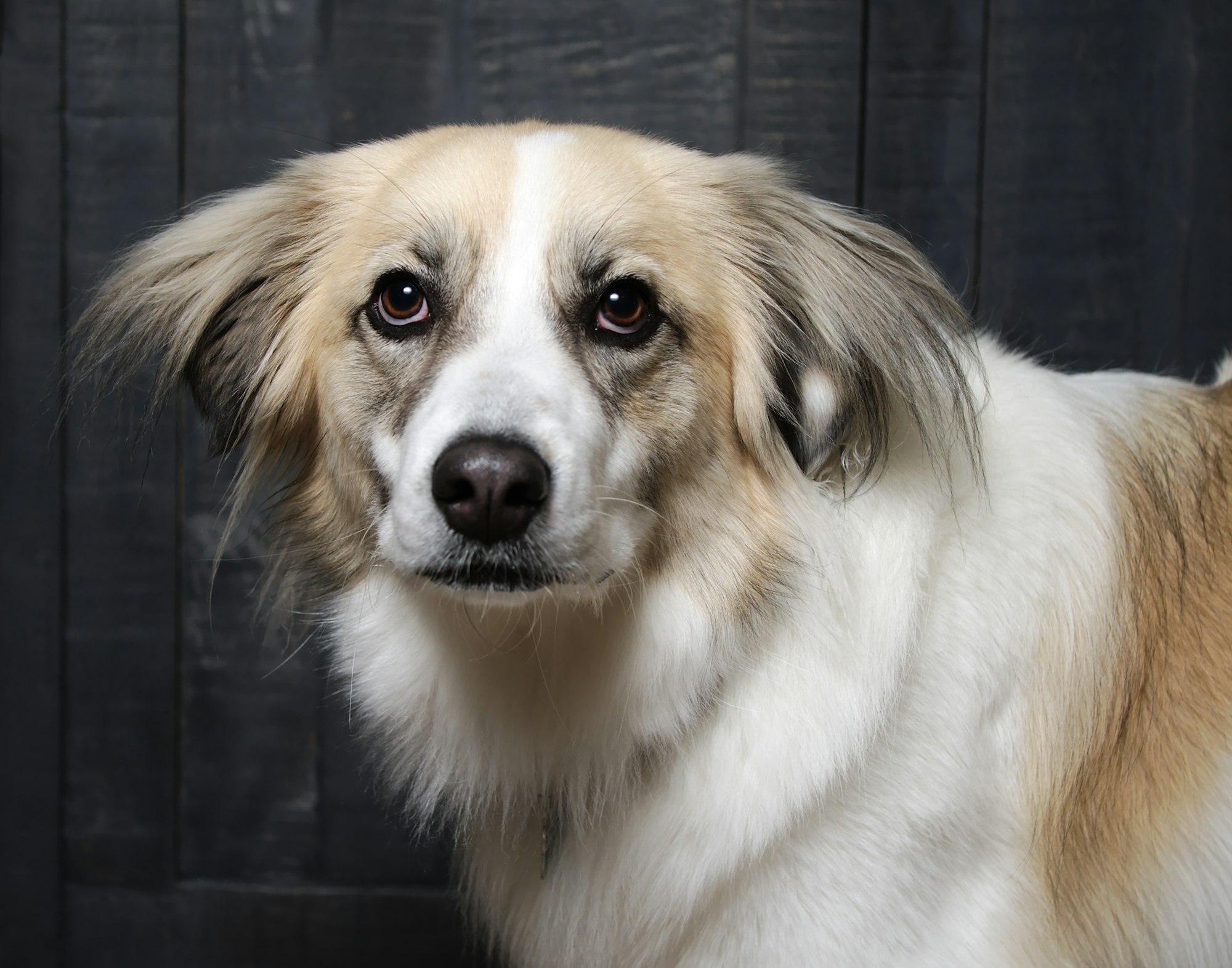
Grooming and Maintenance
Proper grooming and maintenance contribute to the well-being and appearance of your Labrenees. Let's explore the grooming process step by step:
1. Brushing: Regularly brush your Labrenees' coat to prevent tangles, mats, and excessive shedding. Brushing also helps distribute natural oils and promotes a healthy coat.
2. Bathing: Bathe your Labrenees as needed, typically every 6 to 8 weeks or when they become dirty or odorous. Use a dog-friendly shampoo and ensure thorough rinsing.
3. Ear Care: Check and clean your Labrenees' ears regularly to prevent infections. Gently wipe the ears with a damp cloth and avoid inserting anything into the ear canal.
4. Nail Trimming: Trim your Labrenees' nails every few weeks to prevent overgrowth. Be cautious not to cut too close to the quick, as it may cause bleeding and discomfort.
5. Dental Hygiene: Maintain your Labrenees' oral health by brushing their teeth regularly and providing dental treats or toys designed to reduce plaque and tartar buildup.
Health and Longevity
Ensuring the health and longevity of your Labrenees is of utmost importance. Let's explore this aspect step by step:
1. Regular Veterinary Check-ups: Schedule routine visits to the veterinarian for comprehensive health check-ups and vaccinations. Regular monitoring can help detect and address any potential health issues early.
2. Preventive Care: Administer preventive treatments for common issues such as fleas, ticks, and heartworms as recommended by your veterinarian.
3. Healthy Lifestyle: Provide a balanced diet, regular exercise, and mental stimulation to promote overall health and well-being.
4. Recognizing Signs of Illness: Familiarize yourself with the common signs of illness in dogs, such as changes in appetite, behavior, or energy levels. Promptly seek veterinary care if you notice any concerning symptoms.
Choosing Your Perfect Companion
Selecting a Labrenees as your perfect companion involves careful consideration. Here's how to make the right choice step by step:
1. Lifestyle Assessment: Evaluate your lifestyle, daily routine, and activity level to determine if a Labrenees is a suitable match. Consider their exercise needs and grooming requirements.
2. Space and Environment: Ensure you have adequate space, both indoors and outdoors, to accommodate the size and energy levels of a Labrenees.
3. Commitment and Time: Be prepared to commit time and effort to provide proper care, training, and companionship to your Labrenees throughout their life.
4. Adoption or Breeder: Decide whether to adopt a Labrenees from a shelter or rescue or purchase from a reputable breeder. Research and choose a responsible source.
Integrating Your New Friend
Welcoming a Labrenees into your home is an exciting journey. Here's how to seamlessly integrate your new friend step by step:
1. Safe Space
Create a designated safe space for your Labrenees with comfortable bedding, interactive dog toys, and access to fresh water.
2. Introduction to Family and Pets
Gradually introduce your Labrenees to family members, including children and other pets, in a calm and controlled manner.
3. Training and Routine
Establish a consistent daily routine that includes feeding, exercise, training, and rest. Use positive reinforcement to reinforce good behavior.
4. Patience and Bonding
Be patient as your Labrenees adjust to their new surroundings. Spend quality time bonding through play, walks, and affection.
Common Misconceptions
As with any breed, there are common misconceptions about Labrenees dogs that deserve clarification. Let's debunk some of these myths:
Myth 1: Labrenees are Aggressive Due to Their Size
Reality: Labrenees dogs may appear imposing due to their size, but their temperament is largely influenced by their upbringing and socialization. With proper training and care, they can be gentle and friendly companions.
Myth 2: Labrenees Require Excessive Grooming
Reality: While Labrenees have a luxurious coat, regular brushing, and routine maintenance can effectively manage seasonal shedding and keep their coat in good condition.
Myth 3: Labrenees Need a Large Yard to Thrive
Reality: While a spacious yard can be beneficial, Labrenees can adapt well to various living situations, including apartments, as long as they receive adequate exercise and mental stimulation.
Myth 4: Labrenees are Not Suitable for Families with Children
Reality: Labrenees dogs can be wonderful family pets, especially when raised with children and properly trained. Their gentle and protective nature can make them excellent companions for kids.
Myth 5: Labrenees Cannot Get Along with Other Pets
Reality: Early socialization and training play a significant role in how Labrenees interact with other pets. With proper introductions and positive reinforcement, they can coexist harmoniously.
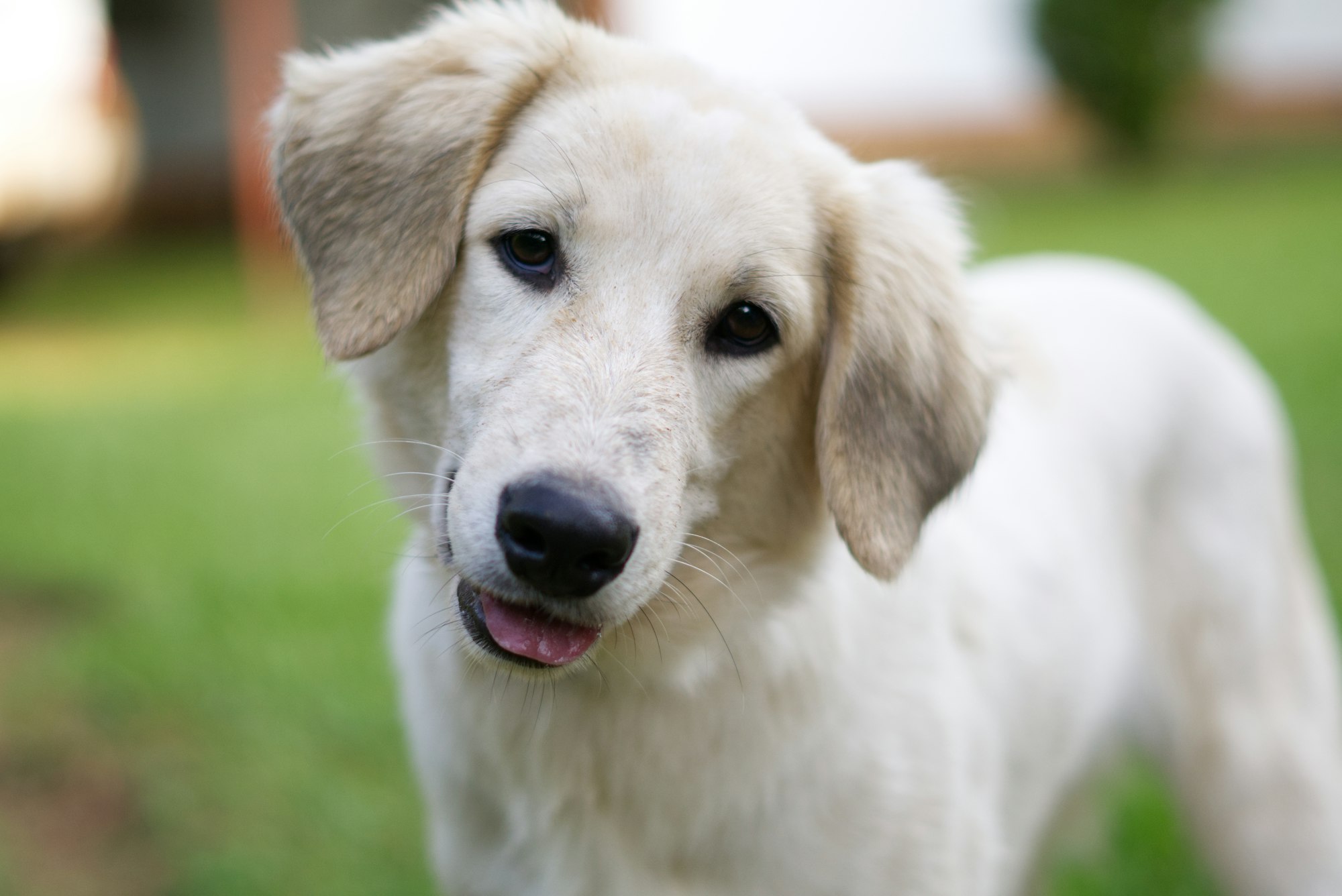
Conclusion
In the heartwarming embrace of a Labrenees, you'll discover a faithful companion that embodies the very essence of canine devotion. Their unique blend of elegance, playfulness, and intelligence makes them an ideal addition to any loving home. So, if you're ready to embark on a journey filled with love, laughter, and unforgettable moments, consider welcoming a Labrenees into your life.
Frequently Asked Questions (FAQs)
1. Are Labrenees dogs suitable for apartment living?
Labrenees dogs are larger and more active, making them better suited for homes with ample space and a yard to play in.
2. Do they get along well with children and other pets?
Yes, Labrenees dogs are known for their friendly and gentle demeanor, making them excellent companions for families with children and other pets.
3. How much exercise do Labrenees dogs need daily?
On average, Labrenees dogs should engage in around 60 minutes of exercise every day to keep them happy and healthy.
4. Are Labrenees prone to excessive barking?
Labrenees dogs may bark to alert their owners, but proper training and socialization can help manage and reduce excessive barking tendencies.
5. What is the typical lifespan of a Labrenees?
With proper care and a healthy lifestyle, Labrenees dogs can live between 10 to 14 years.
